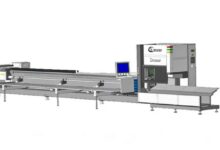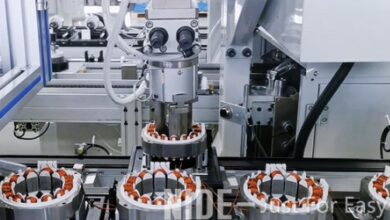Construction Company Innovations: Embracing Technology and Sustainable Practices

The construction industry is rapidly evolving, with companies adopting new technologies and sustainable practices to enhance efficiency, safety, and environmental responsibility. These innovations transform how construction projects are planned, executed, and managed at Exterior Finishes of Lake Stevens, leading to better outcomes for clients and the environment. We will explore the impact of technological advancements and sustainable practices in the construction industry, highlighting how these changes shape the future of construction companies.
Technological Advancements in Construction
Technological advancements are revolutionizing the construction industry, making processes more efficient, accurate, and safer. One of the most significant technological innovations is Building Information Modeling (BIM). BIM is a digital representation of the physical and functional characteristics of a building, allowing construction companies to create detailed 3D models. These models provide a comprehensive project view, enabling better planning, design, and coordination. BIM facilitates collaboration among architects, engineers, and contractors, reducing errors and improving project outcomes.
Drones are another technological tool transforming the construction industry. Drones provide aerial views of construction sites, offering real-time data and high-resolution images. This technology enhances site surveys, monitoring, and inspections, making tracking progress and identifying potential issues easier. Drones can quickly access hard-to-reach areas, improving safety by reducing the need for workers to climb scaffolding or navigate hazardous conditions. Additionally, drones can be used for marketing purposes, capturing stunning aerial footage of completed projects.
3D printing is also making its mark on the construction industry. This technology allows for creation of building components and even entire structures using automated, layer-by-layer deposition of materials. 3D printing offers several benefits, including reduced material waste, faster construction times, and the ability to produce complex designs that would be difficult or impossible to achieve with traditional methods. For example, 3D printing can create intricate architectural elements, custom fixtures, and even modular housing units.
Robotics and automation further enhance construction efficiency and safety. Automated machinery, such as bricklaying robots and autonomous construction vehicles, can perform repetitive tasks with precision and speed, reducing labor costs and minimizing human error. Robotics also improve safety by taking over dangerous tasks like working at heights or handling heavy materials. The use of robotics in construction is expected to increase as technology advances and becomes more affordable.
Augmented Reality (AR) and Virtual Reality (VR) are also gaining traction in the construction industry. AR overlays digital information onto the physical world, allowing workers to visualize project details on-site. For example, AR can display 3D models, blueprints, and measurements directly on the construction site, aiding in precise execution. Conversely, VR immerses users in a fully virtual environment, enabling virtual walkthroughs and simulations of construction projects. These technologies enhance design visualization, improve training, and facilitate better decision-making.
Read also: Smart Home Technology: Improving Product Development with Annotated User Feedback
Sustainable Practices in Construction
Sustainable practices are becoming increasingly important in the construction industry, driven by the need to reduce environmental impact and promote resource efficiency. One key aspect of sustainable construction is the use of green building materials. These materials are environmentally friendly, non-toxic, and often made from renewable or recycled sources. Examples include bamboo, reclaimed wood, recycled steel, and low-VOC (volatile organic compound) paints. Using green materials reduces the carbon footprint of construction projects and promotes healthier indoor environments.
Energy efficiency is another critical component of sustainable construction. Construction companies are incorporating energy-efficient designs and technologies to reduce energy consumption and greenhouse gas emissions. This includes installing energy-efficient windows and doors, using high-performance insulation, and incorporating renewable energy sources such as solar panels and wind turbines. Energy-efficient buildings reduce operational costs and contribute to a more sustainable future by decreasing reliance on fossil fuels.
Water conservation is also a key focus in sustainable construction. Construction companies implement water-saving measures like low-flow plumbing fixtures, rainwater harvesting systems, and greywater recycling. These practices reduce water consumption and minimize the strain on local water resources. Sustainable landscaping techniques, such as xeriscaping and native plants, help conserve water and create resilient, low-maintenance outdoor spaces.
Waste reduction is an essential aspect of sustainable construction. Construction projects generate significant amounts of waste, including materials such as concrete, wood, and metal. Construction companies are adopting management strategies to minimize waste and promote recycling and reuse. This includes careful planning to reduce material offcuts, using prefabricated components, and implementing recycling programs on-site. Construction companies can significantly reduce their environmental impact by diverting waste from landfills and reusing materials.
Sustainable construction also involves creating buildings that promote occupant health and well-being. This includes designing spaces with ample natural light, good indoor air quality, and access to green spaces. Biophilic design, which incorporates natural elements such as plants, water features, and natural materials, has improved occupant well-being and productivity. Construction companies increasingly integrate these principles into their projects to create healthier, more enjoyable living and working environments.
Another important aspect of sustainable construction is considering a building’s lifecycle. This involves evaluating the environmental impact of a building from its construction through its use and eventual demolition. Construction companies are adopting life cycle assessment (LCA) practices to quantify and minimize environmental impacts throughout a building’s lifecycle. This holistic approach ensures that sustainability is considered at every project stage, from design and construction to operation and end-of-life.
Conclusion
The construction industry is undergoing a significant transformation, driven by technological advancements and adopting sustainable practices. Technologies such as Building Information Modeling, drones, 3D printing, robotics, and augmented and virtual reality revolutionize how construction projects are planned, executed, and managed. These innovations enhance efficiency, accuracy, and safety, improving client and worker outcomes. Sustainable practices, including using green building materials, energy efficiency, water conservation, waste reduction, and occupant health, are becoming integral to modern construction projects. By embracing these advancements and practices, construction companies improve their operations and contribute to a more sustainable and resilient built environment. Understanding these changes highlights the critical role of construction companies in shaping the future of urban development and environmental stewardship.








